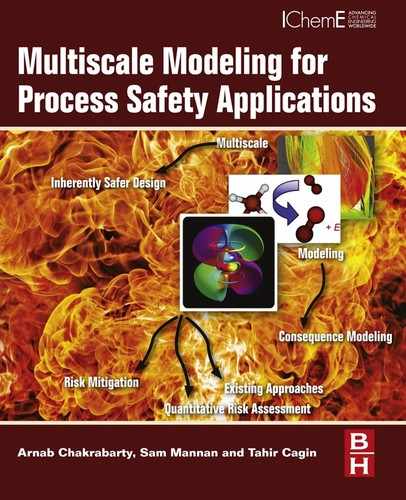Barratt M.D. Quantitative structure activity relationships for skin corrosivity of organic acids, bases and phenols. Toxicology Letters. 1995;75:169–176.
Barratt M.D. Quantitative structure-activity relationships for skin irritation and corrosivity of neutral and electrophilic organic chemicals. Toxicology In Vitro. 1996;10:247–256.
Barratt M.D, Basketter D.A, Roberts D.W. Skin sensitization structure-activity relationships for phenyl benzoates. Toxicology In Vitro. 1994;8:823–826.
Benigni R, Bossa C. Predictivity of QSAR. Journal of Chemical Information and Modeling. 2008;48:971–980.
Croni M.T, et al. Structure-toxicity relationships for aliphatic compounds encompassing a variety of mechanisms of toxic action to Vibrio fischeri. SAR and QSAR in Environmental Research. 2000;11:301–312.
Devillers J, Flatin J. A general QSAR model for predicting the acute toxicity of pesticides to Oncorhynchus mykiss. SAR and QSAR in Environmental Research. 2000;11(1):25–43. Available at: http://dx.doi.org/10.1080/10629360008033227 (accessed 13.02.14.).
Enslein K, et al. Estimation of rabbit eye irritation scores by structure-activity equations. In Vitro Toxicology. 1988;2(1).
Fjodorova N, et al. Counter propagation artificial neural network categorical models for prediction of carcinogenicity for non-congeneric chemicals. SAR and QSAR in Environmental Research. 2010;21:57–75.
Gute B.D, Basak S.C. Predicting acute toxicity (LC50) of benzene derivatives using theoretical molecular descriptors: a hierarchical QSAR approach. SAR and QSAR in Environmental Research. 1997;7:117–131.
Helguera A.M, et al. A topological substructural approach applied to the computational prediction of rodent carcinogenicity. Bioorganic & Medicinal Chemistry. 2005;13:2477–2488.
Helguera A.M, Combes R.D, et al. Applications of 2D descriptors in drug design: a DRAGON tale. Current Topics in Medicinal Chemistry. 2008;8:1628–1655.
Helguera A.M, Cordeiro M.N.D.S, et al. QSAR modeling of the rodent carcinogenicity of nitrocompounds. Bioorganic & Medicinal Chemistry. 2008;16:3395–3407.
Hewitt M, et al. Structure-based modelling in reproductive toxicology: (Q)SARs for the placental barrier. SAR and QSAR in Environmental Research. 2007;18(1–2):57–76. Available at: http://www.ncbi.nlm.nih.gov/pubmed/17365959 (accessed 13.02.14.).
Ivanciuc O. Support vector machine classification of the carcinogenic activity of polycyclic aromatic hydrocarbons. Internet Electronic Journal of Molecular Design. 2002:203–218. Available at: http://pdf.easechem.com/pdf/09/ebb50ca2-efd2-4d7f-ade7-afc9e46be528.pdf (accessed 13.02.14.).
Klopman G, et al. Multiple computer automated structure evaluation methodology as an alternative to in vivo eye irritation testing. ATLA. Alternatives to Laboratory Animals. 1993;21(1):14–27. Available at: http://cat.inist.fr/?aModele=afficheN&cpsidt=4658104 (accessed 13.02.14.).
Luan F, et al. Classification of the carcinogenicity of N-nitroso compounds based on support vector machines and linear discriminant analysis. Chemical Research in Toxicology. 2005;18:198–203.
Morales A.H, Duchowicz P.R, et al. Application of the replacement method as a novel variable selection strategy in QSAR. 1. Carcinogenic potential. Chemometrics and Intelligent Laboratory Systems. 2006;81:180–187.
Morales A.H, Pérez M.A.C, et al. Quantitative structure activity relationship for the computational prediction of nitrocompounds carcinogenicity. Toxicology. 2006;220:51–62.
Morrall D.D, Belanger S.E, Dunphy J.C. Acute and chronic aquatic toxicity structure-activity relationships for alcohol ethoxylates. Ecotoxicology and Environmental Safety. 2003;56:381–389.
Nantasenamat C, Isarankura-na-ayudhya C, Naenna T. A practical overview of quantitative structure-activity relationship. EXCLI Journal. 2009;8:74–88.
OSHA. Hazard Communication. 2014. 29 CFR Parts 1910, 1915, 1917, 1918, and 1926. No. OSHA-H022K-2006-0062. Available at: www.osha.gov/dsg/hazcom/index.html (accessed 10.02.14.).
Patlewicz G, Roberts D, Walker J. QSARs for the skin sensitization potential of aldehydes and related compounds. QSAR & Combinatorial Science. 2003;22:196–203.
Quintero F.A, et al. Review of existing QSAR/QSPR models developed for properties used in hazardous chemicals classification system. Industrial & Engineering Chemistry Research. 2012;51(49):16101–16115. Available at: http://dx.doi.org/10.1021/ie301079r (accessed 13.02.14.).
Saliner A.G, Patlewicz G, Worth A. Review of Literature-Based Models for Skin and Eye Irritation and Corrosion. 2006. JRC report EUR. Available at: http://scholar.google.com/scholar?hl=en&btnG=Search&q=intitle:Review+of+Literature-Based+Models+for+Skin+and+Eye+Irritation+and+Corrosion#1 (accessed 28.09.13.).
Saliner A.G, Patlewicz G, Worth A.P. A review of (Q)SAR models for skin and eye irritation and corrosion. QSAR & Combinatorial Science. 2008;27(1):49–59. Available at: http://doi.wiley.com/10.1002/qsar.200710103 (accessed 13.02.14.).
Sanderson D.M, Earnshaw C.G. Computer-prediction of possible toxic action from chemical-structure–the Derek system. Human & Experimental Toxicology. 1991;10:261–273.
Tatiana N, et al. Collection and Evaluation of (Q)SAR Models for Mutagenicity and Carcinogenicity. 2007. Available at: http://publications.jrc.ec.europa.eu/repository/handle/111111111/5588 (accessed 13.02.14.).
Todeschini R, Consonni V. Handbook of Molecular Descriptors. 2000.
Tropsha A, Gramatica P, Gombar V.K. The importance of being earnest: validation is the absolute essential for successful application and interpretation of QSPR models. QSAR Combinatorial Science. 2003;22:69–77.
Wang L. Support Vector Machines: Theory and Applications. Springer; 2005. Available at: http://www.springer.com/engineering/computational+intelligence+and+complexity/book/978-3-540-24388-5 (accessed 13.02.14.).
Wei D.B, Zhai L.H, Hu H.Y. QSAR-based toxicity classification and prediction for single and mixed aromatic compounds. SAR and QSAR in Environmental Research. 2004;15:207–216.
Wold S, et al. Some recent developments in PLS modeling. Chemometrics and Intelligent Laboratory Systems. 2001;58:131–150.
Woo Y.T, et al. Development of structure-activity relationship rules for predicting carcinogenic potential of chemicals. Toxicology Letters. 1995;79:219–228.
Zhang Y.P, et al. Prediction of the carcinogenicity of a second group of organic chemicals undergoing carcinogenicity testing. Environmental Health Perspectives. 1996;104(Suppl.):1045–1050.




